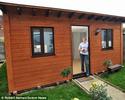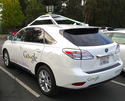After over 500 murders in Chicago in 2012, the Windy City’s violence epidemic continues – 2013 saw the deadliest January in over a decade – and continues to make national news. The New York Times, for example, ran a recent piece noting how Chicago’s strict gun laws can’t stem the tide of violence. read more »
Urban Issues
Gentrification as an End Game, and the Rise of “Sub-Urbanity”
“It took a bit of wind out of my sails, watching what happened in this neighborhood, watching how it happened…I don’t know how to beat this [gentrification]. I don’t know how anyone can beat this machine.”—From the article The Ins and Outs
The Generalization of Gentrification read more »
The Evolving Urban Form: Rio de Janeiro
Rio de Janeiro was the capital of Brazil from before independence from Portugal was declared in 1822. That all changed in 1960, when the capital moved to the modern planned city of Brasilia, more than 500 miles (800 kilometers) inland. The move, however, did nothing to slow Rio de Janeiro's growth, as the metropolitan area (as designated by Brazil's census agency, the Instituto Brasileiro de Geografia e Estatística), added 7 million people – a 150 percent increase in population – over the ensuing 60 years read more »
Britain's Housing Crisis: The Places People Live
For twenty years British house building has fallen behind demand, forcing up prices and rents. Here's a series of photos showing some of the things people have had to do to live.
Victoria Campbell was living in a shed in her parents' garden in Havant, while she and her fiance saved up for a deposit, but the Council has told her that she has to move out. read more »
Detroit Future City
Recently the Detroit Works Project released their long awaited strategic plan for the city. This is the one led by Toni Griffin that produced a lot of public controversy because of suggestions it would result in the planned shrinkage or decommissioning (or even forced residential relocations) in sparsely populated neighborhoods. read more »
World's Most Affluent Metropolitan Areas: 2012
Late in 2012, the Brookings Institution published its annual Global Metro Monitor (by Emilia Istrate and Carey Anne Nadeau), which estimates economic data for the 300 world metropolitan areas with the largest gross domestic product (GDP). The Global Metro Monitor also provides estimates of the GDP per capita for each of the qualifying metropolitan areas. read more »
Demographic and Economic Challenges: The 9th Annual Demographia International Housing Affordability Survey
The just released 9th Annual Demographia Housing Affordability Survey (pdf) indicates that housing affordability has deteriorated modestly in the last year. A number of major metropolitan areas remain severely unaffordable.
Highlights: Metropolitan Areas
Among the 337 Metropolitan markets analyzed, Hong Kong remained the most unaffordable, with a median multiple (median house price divided by pre-tax median household income) of 13.5, up nearly a full point from last year's 12.6. read more »
Will Driverless Cars Help us Drive Less?
The war on automobiles is real. Backed by a legion of city officials, environmentalists, and new urbanists, the argument to mitigate vehicle usage has so far been an easy sell – at least in planning circles. Their assumptions echo concerns about the trajectory American cities – the downfall of rural life and open space to name a few. The problem is the trifecta of pollution, congestion, and urban sprawl. Out with cars, they propose – people could ride high-speed transit instead of sitting in traffic. read more »
Rust Belt Cities: Invest in Odysseus, Not Barney Fife
Given its legacy of shrinking, the Rust Belt has issues. The issues arose naturally, and relate to the fact things leave, or that so much has left. Particularly, when things leave, the mind—both the individual and the collective city mind—can get protective and restrictive. Neediness arises. The smell of desperation ensues like a pall that can tend to hang over cities, influencing decision making on all levels.
Enter “brain drain”, or that term coined to refer to the outmigration of an area’s educated citizens, particularly it’s young. read more »
How Polarization Plays Out in Washington state: Voting for President and the Same-sex Marriage
Washington may be a left coast “blue” state, but the geography of the voting well illustrates the national phenomena of intensifying polarization. The division may be among individual people, but also expressed in geographies down to precincts and census tracts.
The Washington 2012 elections provided ample data to assess this political and geographic divide. I review here the two most polarized races, for president (Obama vs. Romney) and for R74, to reaffirm the right to same sex marriage. read more »





















